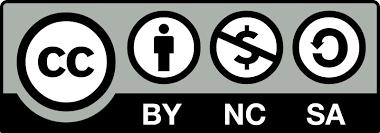An Individual Realization of the Sermon as a Genre Pattern
Maria Wojtak
Abstract
In an attempt to describe an individual realization of the sermon as a genre pattem, the article characterizes a collection of a few dozen sermons delivered by one preacher. In accordance with the conventions typical ofaltemating pattems, i.e. modifications of individual components of the canonical pattem, the preacher uses above all the mecha[1]nism ofreduction. He omits the classic introduction, uses only argumentative schemata in the main bodies of his sermons, and formulates the ending as a conclusion or an appeal. It appears as important for the author to differentiate individual segments of the whole and arrange them in such a way so as to achieve persuasive effects. The preacher assumes the role of an interpreter of the w ord of God, and constructs his sermons in the form of in[1]temally dialogized monologues. The choice of stylistic devices is dictated above all by the principle of appropriateness. The preacher avoids bombastic and official forms, uses religious or colloąuial lexis in or[1]der to render the transfer of message more vivid, imagelike and suggestive. Taking into account the basie features of the altemating pattem of the sermon as a gen[1]re, the said author attempts to speak from his own perspective, but in sucha way as to pre[1]serve the message of God.
Authors
Maria WojtakStatistics
Downloads
License

1. Copyrights to published works are held by the University of Opole (to the collective work) and the Authors (to individual parts of the collective work that have an independent meaning).
2. Only previously undistributed works can be published in the scientific journal "Stylistics".
3. The University of Opole does not restrict the possibility of the author's further dissemination of his work on condition that the scientific journal "Stylistics" is indicated as the original place of publication and the consent of the University Publishing House.
4. Consent to the publication of the work in the scientific journal "Stylistics" is tantamount to granting the author a non-exclusive license to the University of Opole, including the right to use the work without territorial restrictions and time limits in the following fields of exploitation:
a) within the scope of recording and multiplication of the work - production of any number of copies of the work in whole or in part using a specified technique, including printing, reprography, magnetic recording and digital technique, introduction of the work into computer memory and computer networks,
b) within the scope of circulation of the original or copies on which the work has been recorded - circulation, lending or hiring of the original or copies,
c) within the scope of dissemination of the work in a manner other than specified in item 2 - making the work or its abstract available on the Internet by enabling the recipients to access the work on-line or enabling them to download the work to their own device that makes it possible to read it, placing the work in electronic databases that disseminate scientific works, including in particular the CEEOL database (Central and Eastern Online Libray) and the abstract in English in the CEJSH database (The Central Europaen Journal of Social Scienes and Humanites).
d) within the scope of creating and distributing dependent works created using the work - using them in the fields of exploitation specified in points 1-3.
5. The author is not entitled to compensation for granting the license to the work.
6. The author agrees that the University may grant further permission to use the work (sublicense) in the fields of exploitation specified in par. 2 paragraph 4.
7. The author agrees that, in connection with the distribution of the work, his or her personal information, that is, name, affiliation, and e-mail address, may be made public.
Most read articles by the same author(s)
- Maria Wojtak, Anetta Ceglińska, Piękno papieskiego słowa. O stylu encyklik Jana Pawła II, Archidiecezjalne Wydawnictwo Łódzkie, Łódź 2000, 172 s. , Stylistyka: Vol. 10 (2001): Stylistyka dziś - Style and Humour - Stil' i ûmor
- Maria Wojtak, Bogusław Wyderka. Cechy składniowo-stylistyczne siedemnastowiecznej prozy publicystycznej. Piśmiennictwo Śląskie na tlе ogólnopolskim, Opole: Wyższa Szkoła Pedagogiczna w Opolu, 1990, 190 s. , Stylistyka: Vol. 1 (1992): Stylistics today
- MARIA WOJTAK, Stanisław Gajda – uczony, humanista, mistrz, kolega i przyjaciel , Stylistyka: Vol. 32 No. 32 (2023): Stylistyka
- MARIA WOJTAK, Jubileusz Profesor Ewy Malinowskiej , Stylistyka: Vol. 32 No. 32 (2023): Stylistyka




